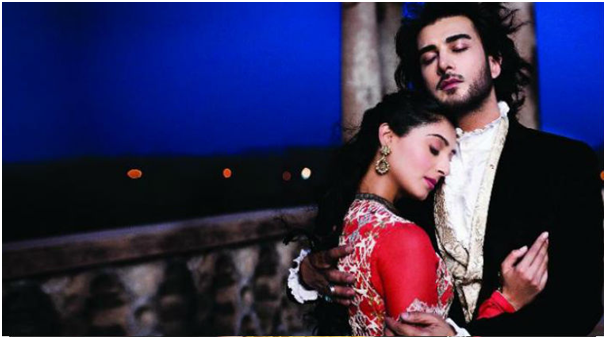Muzaffar Ali's Jaanisaar Spells Love, Peace, Unity
A still from Jaanisaar
Jaanisaar, Muzaffar Ali's recently released film is an intense cinematic tribute to togetherness. It is about living and letting others live, like people had lived in Avadh before 1856 after which the East India Company annexed the region and spread fear and suspicion amongst the population in an attempt to prevent the masses from uniting against the usurper.
The story from 1877 is filmed partly in faded sepia tones in an attempt perhaps to remind viewers that this poetic lesson must not be allowed to recede further into the past. The story is a passionate appeal to contemporary citizens not to allow anyone to come in between their love for each other at a time when divisive forces are trying to spread hate in society.
In his latest film Muzaffar chooses himself to bring to audiences the powerful message of love, peace and unity. Apart from writing the story and dialogues, he has composed the music and also played the title role of jaanisaar, the one who is ready to give his life for his people and land.
It maybe recalled that the jaanisaars of Avadh are a close cousin of the famous janissaries of the elite infantry of Istanbul's Ottoman Empire. Similar to the loyal military force of the Turks, Muzaffar's jaanisaar was once part of the troop of faithful bodyguards in the service of the rulers of Avadh, before the last king is marched into exile in 1856 and an entire life style is forced to grind to an almost tragic halt.
The annexation of Avadh by the British culminates a year later into a bloody war of independence by local people who kill hundreds of Englishmen but their uprising is eventually crushed by the colonialists.
Once they consolidated their power in the heart of the lush agricultural lands of the Indo Gangetic plains, the British bugled the beginning of the end of a way of life practiced here over several centuries that is also the backbone and strength of the society. This is when neither the elite nor ordinary people had allowed personal religious beliefs, or their eating habits to come in the way of friendship of one human being with another.
It was a way of life here for people belonging to different religions, communities and sects not to share the same meal with each other but most would seldom fail to stand in solidarity with the other in times of both joy and sorrow.
To credit the British, they did succeed in disrupting this idyllic relationship that human beings had enjoyed here with each other. Society was shaken up and made insecure by the new masters of Avadh in an effort to enrich themselves with the spoils of divide and rule.
The film unfolds two decades after the revolt against the British in 1857, during which time the jaanisaar has buried many martyrs but also tried to keep alive the spirit of Avadh's unique way of life amongst the survivors of British wrath.
This is a beautiful message but which looses much of its beauty as it gets diffused on screen under the larger than life indulgences of the messenger.
That may not be the intention of the film maker but Jaanisaar comes across as an exercise in trying to get audiences to love the film maker more than the film. For the same reason, Jaanisaar will perhaps be most appreciated by all those who are already in love with Muzaffar and who don't mind being deluged on screen with everything that is dear to him including a certain genre of dance, music, poetry, countryside, clothes, horses, landscapes and props to seduce others in the audience.
All this makes Jaanisaar quite an overwhelming experience full of sound and fury but signifying little, an experience many may choose to avoid.
While some others may one day re visit Jaanisaar and on hindsight may even find much to applaud about the film.





